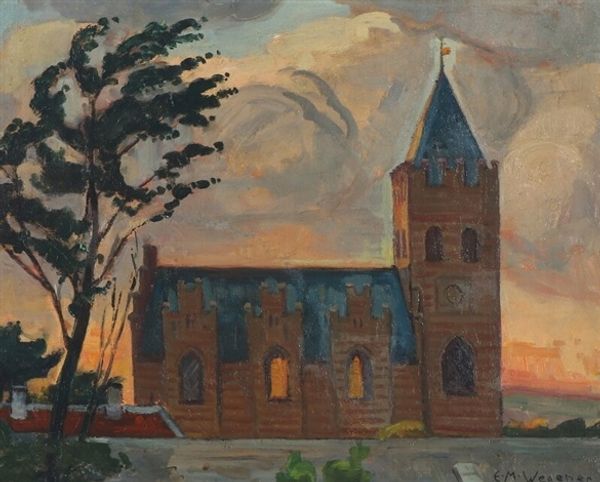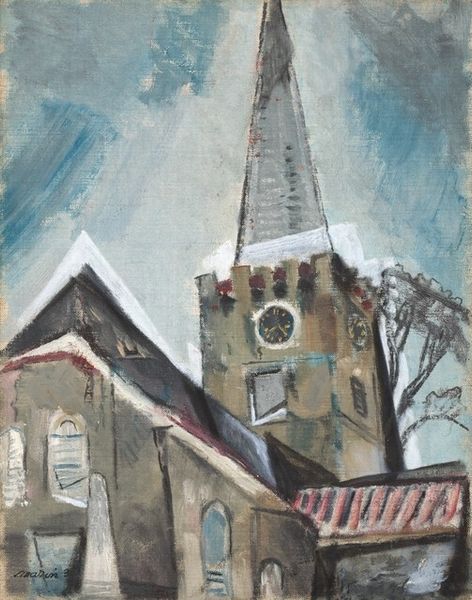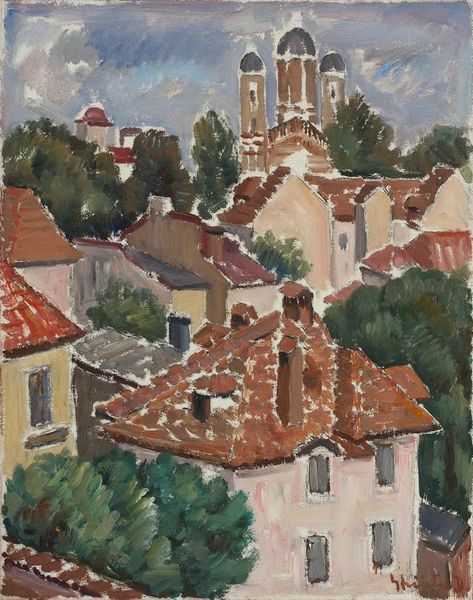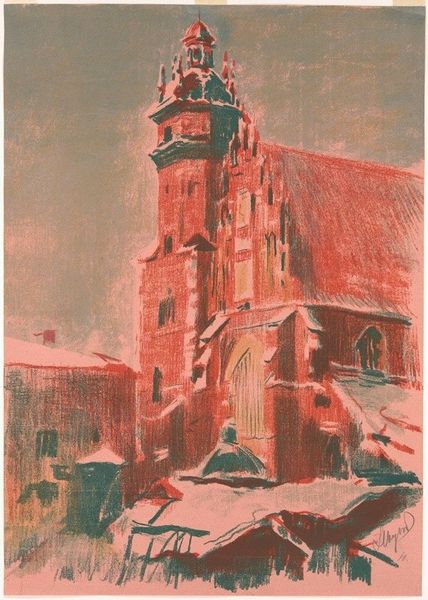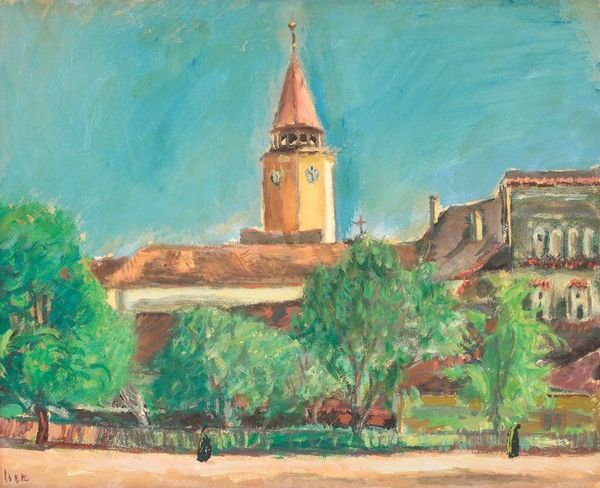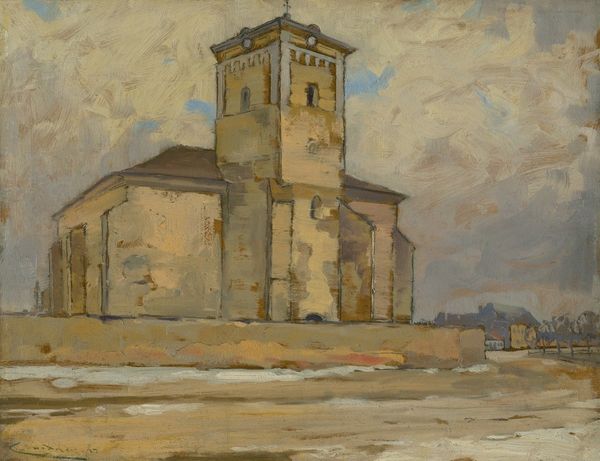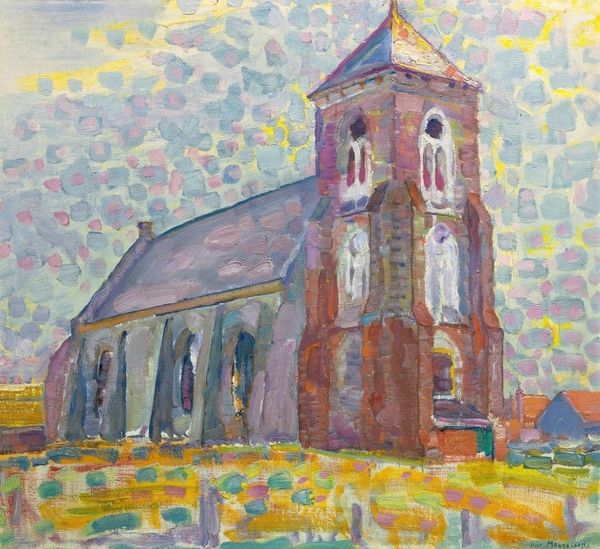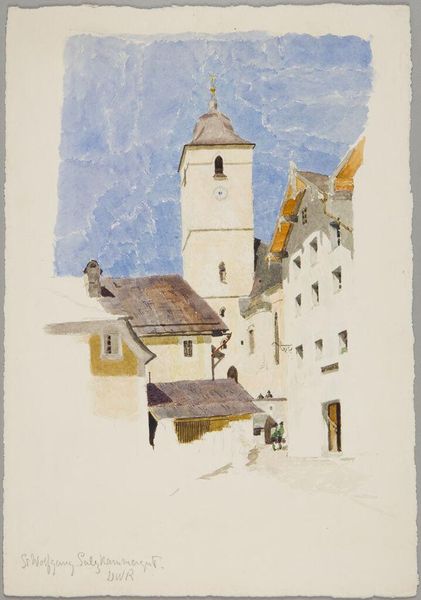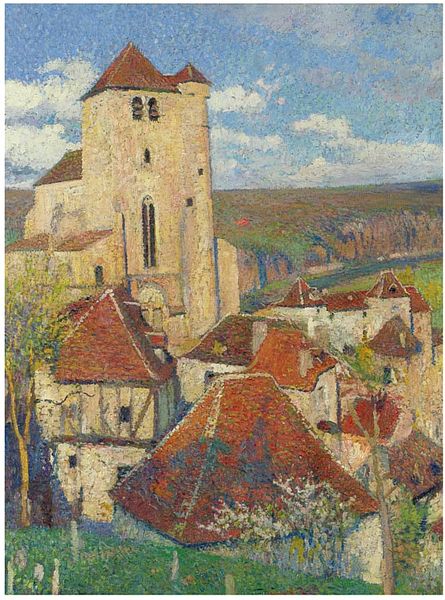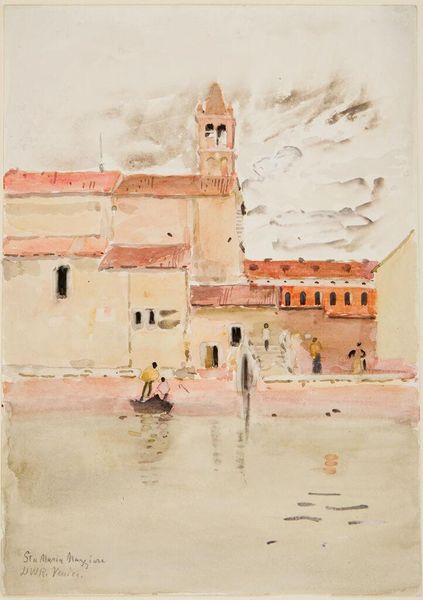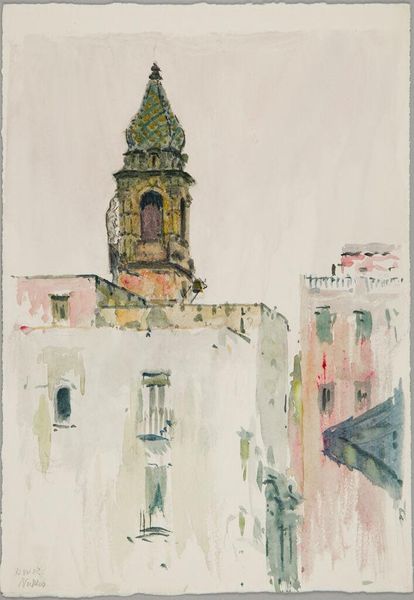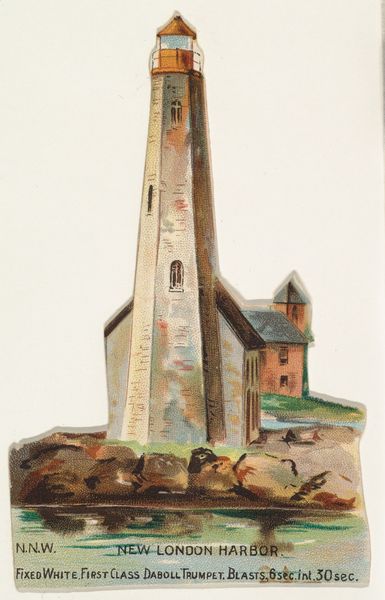
Copyright: Pierre Daura,Fair Use
Editor: We're looking at Pierre Daura's "Untitled (Church in snow with rose sky)" from 1939, an oil painting he made en plein-air. It has a muted, dreamy quality. The composition emphasizes the towering church. How do you interpret this work focusing on just its formal qualities? Art Historian: Precisely. Let's consider how the artist has orchestrated the formal elements. Notice the stratification of the composition. Daura builds upward from the lower register of rooftops—rendered as faceted planes—to the vertical assertion of the church tower. How does the coloration contribute to your sense of a ‘dreamy’ quality? Editor: The palette seems very restricted. It’s mostly cool greys and whites in the foreground, but then you get this soft pink in the sky. It's unexpected against the snowy scene. It almost clashes but also feels very delicate. Art Historian: The interaction between that limited chromatic scale, what you call the rose sky and the tactile paint application are key. Observe how the brushstrokes articulate not just form, but also the light itself. What effect does that contrast of warmth in the sky have on your reading of the central tower? Editor: I think it makes it look imposing but also fragile. It emphasizes the height of the tower. The tower almost dissolves into the sky because its stone has a pink hue, blending structure and light. It makes me think about transcendence... or the potential for something to vanish. Art Historian: An astute observation regarding both the mass and the ephemeral quality evoked. The artist manipulates value, hue and saturation, the three dimensions of color, creating a powerful sense of spatial depth. It's the precise interplay between representation and formal abstraction that makes the painting so compelling. Editor: I see that more clearly now – the way Daura uses color to simultaneously define and dissolve form. It's about the balance between what’s real and how we perceive it. Art Historian: Precisely, a successful artwork provides a unique perceptual and interpretive tension. Thank you for illuminating some aspects of it!
Comments
No comments
Be the first to comment and join the conversation on the ultimate creative platform.
